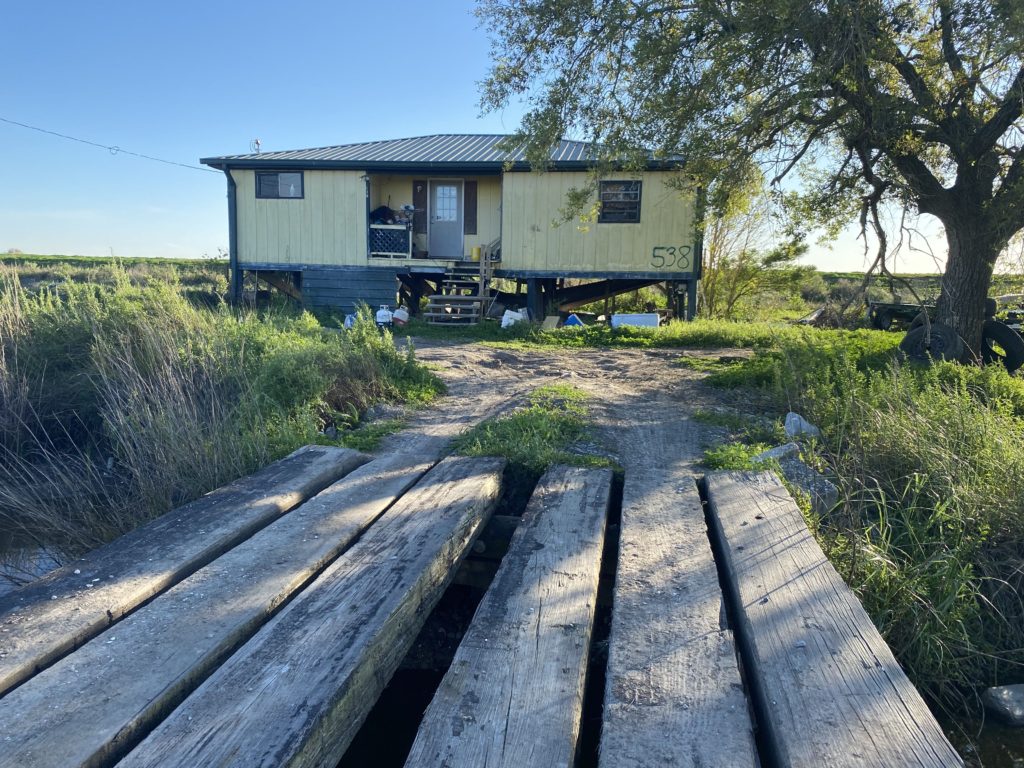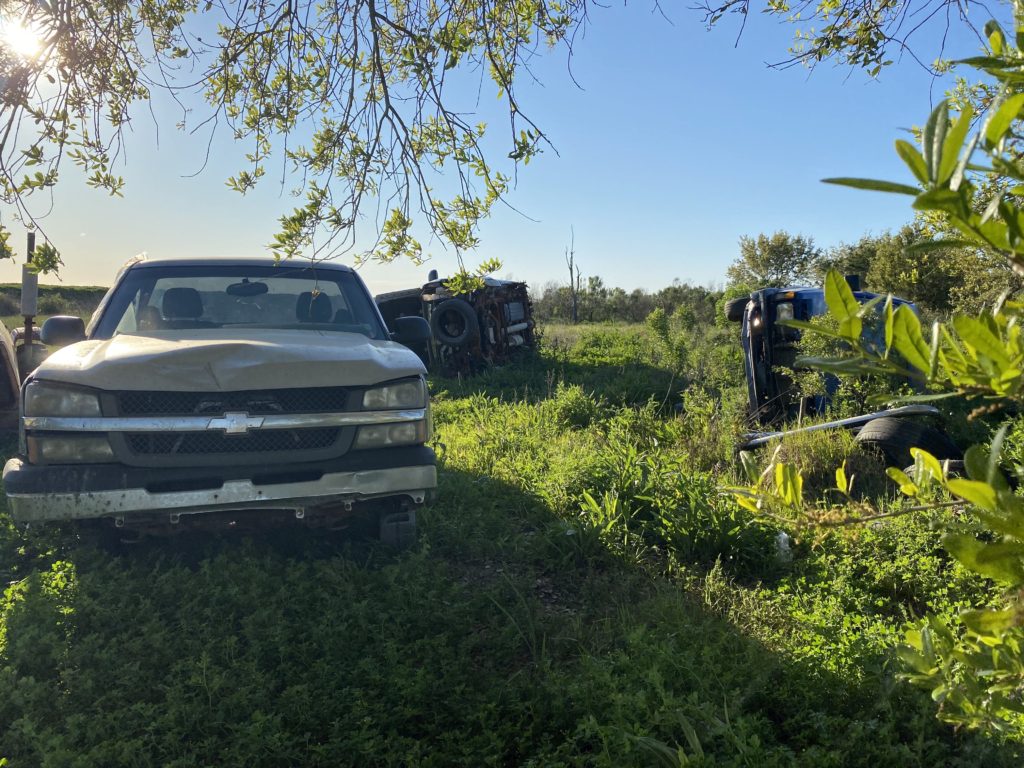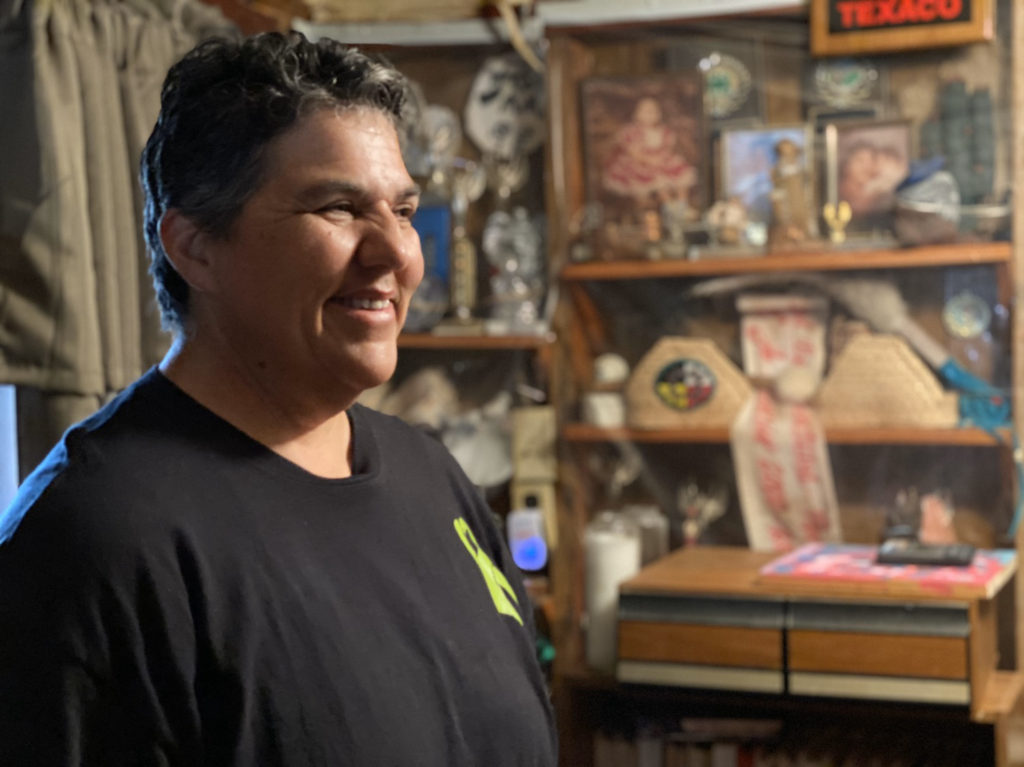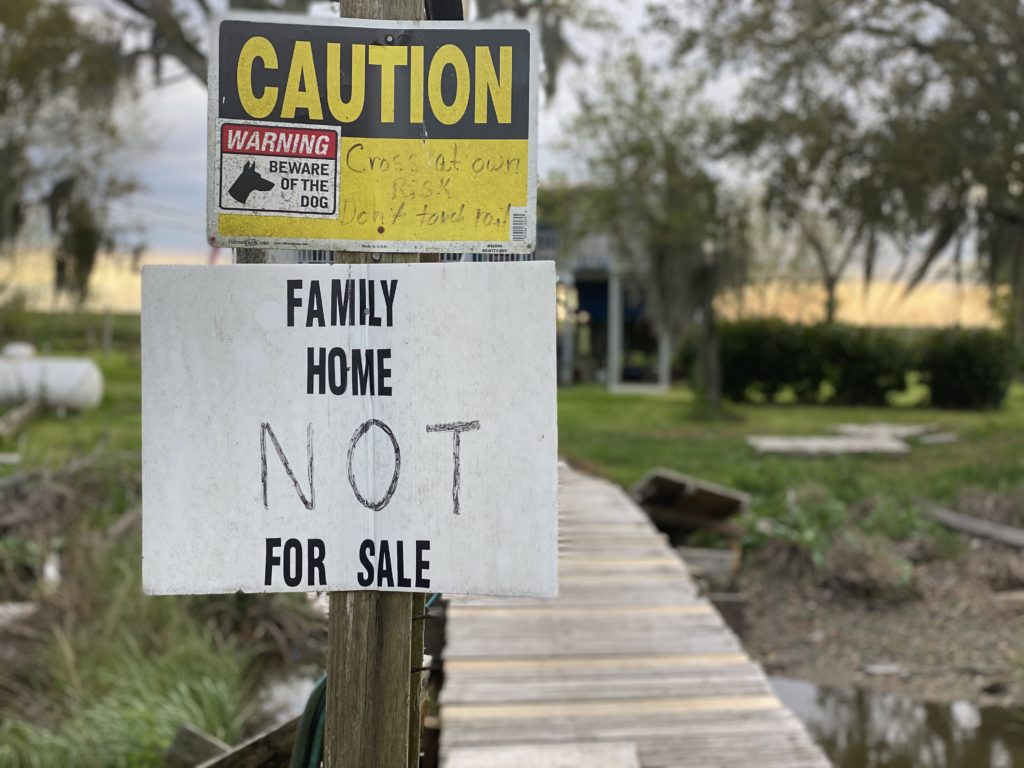The home of Johnny Tamplet isn’t an extravagant one. To get there you must pass over a hand-built bridge made out of wood with at least 3-inch gaps between the boards. In his yard, are discarded tires, and several rusty trucks and cars- some are even flipped over due to past hurricanes. The grass and weeds come up mid-calf and hidden there, are old propane tanks and sometimes his dog Nupey hides there too.
From the outside looking in, there isn’t much. But to Tamplet, it’s everything.
“I don’t have a lot, but what I have is mine,” he said.

Many of the family-owned houses remaining on Isle de Jean Charles are not for sale even as frequent flooding makes it increasingly more difficult to access the land and Tamplet’s is one of those houses. In fact, he says he has no plans to move in the future or ever.
Due to flooding and an array of other causes on Isle de Jean Charles, what was once more than 22,000 acres, has dwindled down to only 320 acres of habitable land. The only road that leads to the island—Island Road, is impassable many days out of the year due to flooding, making it extremely hard for residents to get home or leave the island.
In 2016, the U.S Department of Housing and Urban Development (HUD) awarded Louisiana $48.3 million in a grant with a plan to resettle families into a safer area. While some residents thought move was a good idea and sold their homes to move, others like Tamplet are hesitant when thinking about future consequences of the buy-out.
“They’re [HUD] offering a nice new home, but in two years you’ll be homeless,” said Tamplet.
He says the deal will be “detrimental” to the people who accept the offer.
“They’ll have to pay property tax, homeowner’s insurance and flood insurance. They’ll eventually lose their homes because they’ve already signed away property to HUD back on the island and can’t afford the new ones.”

Tamplet lives on less than $13,500 a year and says some people on the island live on a lot less. With the offer of a new home off the island, comes expenses Tamplet isn’t financially ready to pay.
“The value of my house and property is below the homestead exemption,” he said. “So, I don’t pay taxes. But, if I accept one of these houses up here, I’m gonna’ have to come up with more than likely 15 to $1,800 a year, out of my social security.”
Aside from financial costs, for other residents on the island, moving would cost sentimental and cultural values.
Isle de Jean Charles has been mainly inhabited by people with American Indian ancestry. What’s been home to descendants of the Biloxi-Chitimacha tribe will soon be only memories.
Cookie Naquin, niece of Chief Albert Naquin of the Biloxi-Chitimacha tribe, is one of the few of her family members that still live on the island. She grew up on the land, like her ancestors feels that the island is home and doesn’t want to sell her property either.

“They [HUD] wanted us to give up the house so we could have a house miles away from here and give our land away,” Naquin said.
With strong heritage ties, Naquin is reluctant to leave without a fight. Her entire family use to live on the island and with less than ten living there now, the land that was once theirs, is slowly slipping through their fingers.
Naquin is also worried about family members who move with the resettlement plan. The land their government is offering is almost an hour drive away from the island. With elderly member moving so far away, she worries if there’s an emergency, who would be available to get to them in time.
Family traditions like fishing, cooking and visiting each other daily, are all tied to Isle de Jean Charles, and giving up the land would be like abandoning another family member.
“It’s like someone pulling your heart out,” she said. “It really is heart wrenching to watch.”

For natives like Naquin and non-natives like Tamplet, the island is much more than just a home. It’s a special place that if drastic steps are taken soon, will be just a memory. But, as long as residents are willing to fight, Isle de Jean Charles still has a chance.
Tamplet has been very vocal of his opinion, making it known he has no plans to surrender.
“I bought this house 11 years ago in October. And I tell people, I didn’t buy it to live here, I bought it because this is where I wanna’ die.”